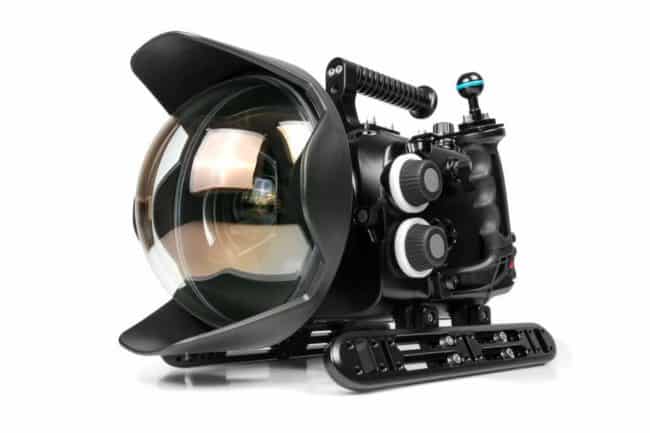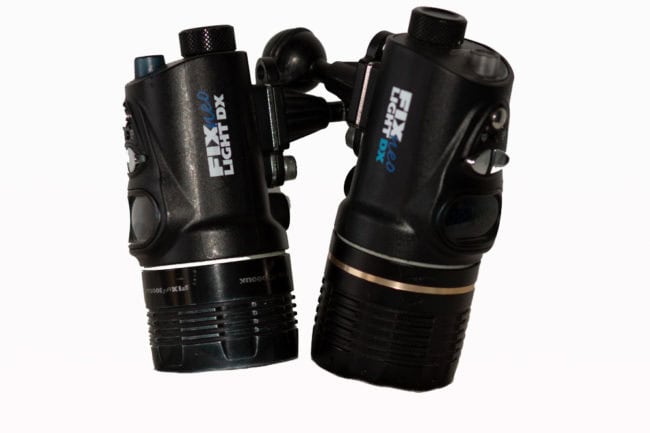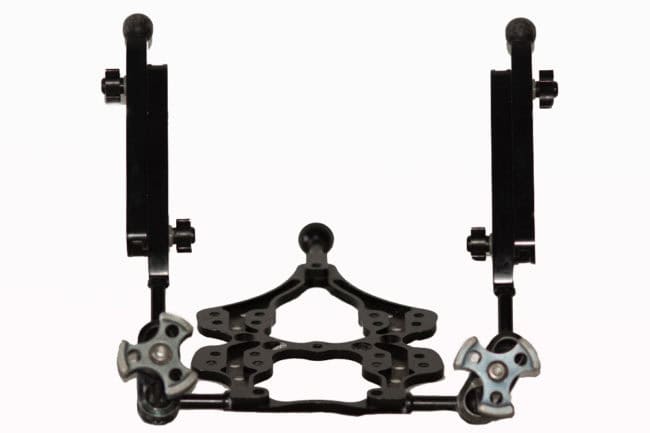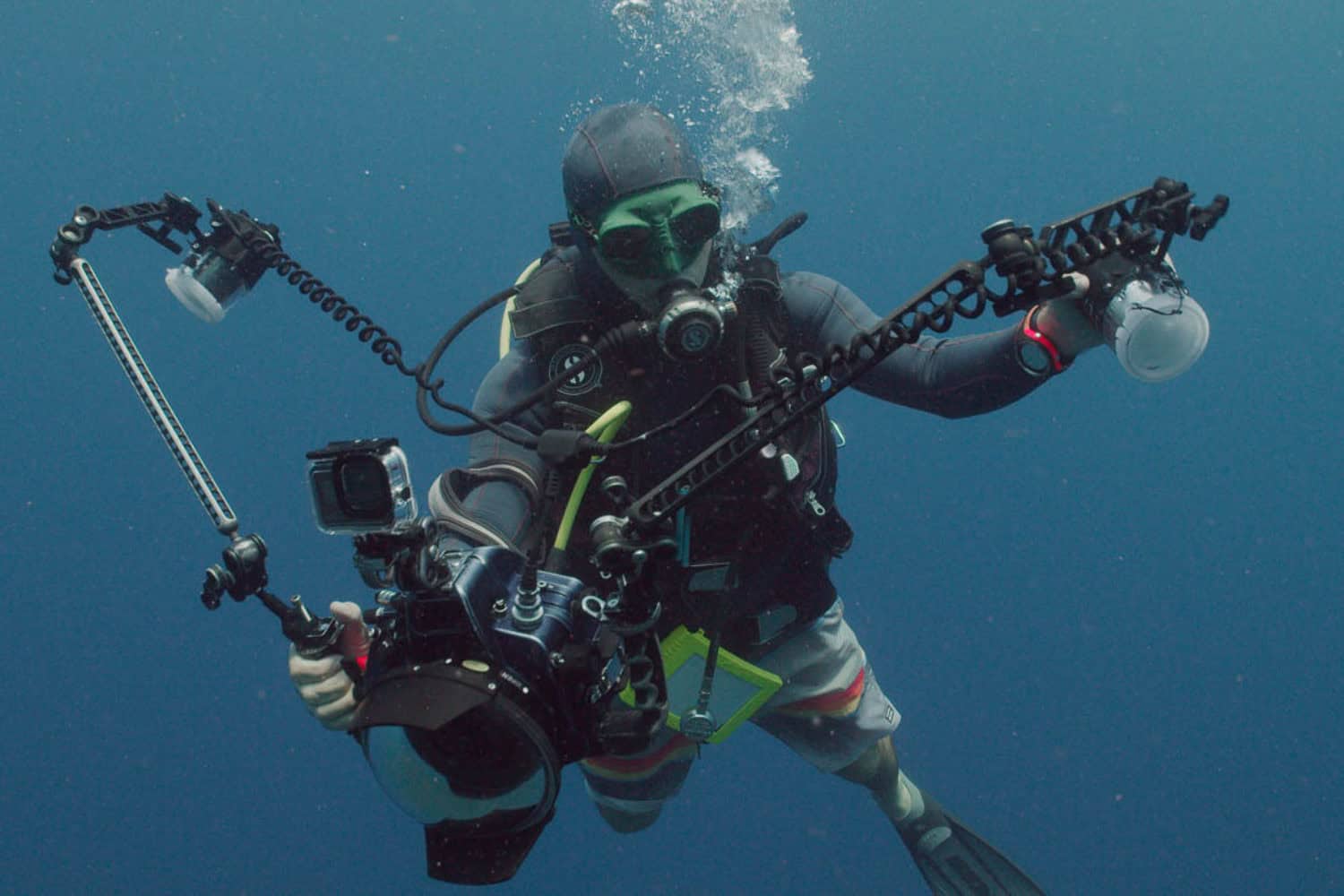Tools Needed For Underwater Filming
 Although it’s often used in many productions, from BBC documentaries to feature films, underwater filming is a mystery to many. There are many forms of underwater filming, from shallow bath tub shots to deep sea cinematography. Each of these disciplines requires both the necessary skillset as well as the right equipment. In this article we will discuss the tools that are needed to film on scuba.
Although it’s often used in many productions, from BBC documentaries to feature films, underwater filming is a mystery to many. There are many forms of underwater filming, from shallow bath tub shots to deep sea cinematography. Each of these disciplines requires both the necessary skillset as well as the right equipment. In this article we will discuss the tools that are needed to film on scuba.
A Waterproof Housing
The first tool that is necessary is a suitable underwater enclosure for the camera. Depending on the camera, there are many different options available. Most of the popular filming cameras such as RED, Alexa, Canon, and Sony have professional style underwater housings available. These are custom designed aluminum housings that fit a specific model of camera. Unfortunately, as the housings are designed around one camera, they are not typically able to fit other cameras. Housings are often more expensive than the camera itself! However, these housings are typically rated to more than 60 metres of depth and offer a real sense of security. We use Nauticam Housings for their superior design, optical engineering, and innovative engineering which is constantly raising the bar in underwater filming.
For those who only need a few quick shots for a production, cheaper alternatives exist. There are several brands which make splash proof style bags to fit different cameras. However, these are not designed for full immersion past snorkeling depths. These bags do not offer a real sense of security for expensive camera equipment.
Ports
Ports are an integral part of every serious underwater rig. Basically, the port is the glass portion of the underwater housing where the lens is. These can typically be broken down into flat ports and dome ports. Flat ports are used for macro and narrow angled lenses when shooting close up work. These are very popular and integral for shooting marine life in natural history films. Dome ports are used for wide angle lenses and the size of the port is normally 8 inches or wider. This allows for wide angle lenses to shoot large scenes without distortion. Higher quality glass and the correct port for the exact lens are important here to avoid barrel distortion and soft edges. Professional shooters will be able to provide the best equipment combinations for specific shoots.
Lights
 There is nothing worse for filming than the colour sapping effect of water. The colour spectrum of water is adversely affected by depth which means that in as shallow of water as 10 ft (3 metres), the red spectrum is gone! Once past 20 feet (7 metres or so) then everything pretty much appears blue/green. In order to get true colour on the screen underwater lights are needed. Lights come in many sizes and brightness, however, with the advent of LED technology over the years, quality lighting has become more affordable. When it comes to underwater lighting, it’s always best to have more. Modern lights have many power settings so even the brightest lights can be turned down. For macro/close up work, not as much light is needed. However, for wide angle work, bright lights are needed to bring out the rich colours underwater.
There is nothing worse for filming than the colour sapping effect of water. The colour spectrum of water is adversely affected by depth which means that in as shallow of water as 10 ft (3 metres), the red spectrum is gone! Once past 20 feet (7 metres or so) then everything pretty much appears blue/green. In order to get true colour on the screen underwater lights are needed. Lights come in many sizes and brightness, however, with the advent of LED technology over the years, quality lighting has become more affordable. When it comes to underwater lighting, it’s always best to have more. Modern lights have many power settings so even the brightest lights can be turned down. For macro/close up work, not as much light is needed. However, for wide angle work, bright lights are needed to bring out the rich colours underwater.
Tripod
 Although many would not think of it for underwater, a tripod is a very useful tool. The main use of a tripod is for static shots when using a narrow angled lens. Keeping the camera still underwater is not easy as such effects of current, waves, and the act of breathing all create movement. When shooting marine life an underwater tripod comes in very handy. It can also be used for wider scenes such as capturing schools of fish moving over coral reefs. There are also uses for tools such as sliders when capturing natural history behaviour.
Although many would not think of it for underwater, a tripod is a very useful tool. The main use of a tripod is for static shots when using a narrow angled lens. Keeping the camera still underwater is not easy as such effects of current, waves, and the act of breathing all create movement. When shooting marine life an underwater tripod comes in very handy. It can also be used for wider scenes such as capturing schools of fish moving over coral reefs. There are also uses for tools such as sliders when capturing natural history behaviour.
A Checklist for Underwater Filming
A checklist is possibly the most important tool of all! Unlike shooting on land, you can’t just grab a spare battery when underwater. Housings are designed to be waterproofed and can’t be opened underwater. Therefore, a strict checklist should be reviewed before descending. Check that focus works, check that all the dials work, take a test shot, make sure all lights turn on etc. Some housings come with a vacuum seal, make sure that it’s functioning properly and do a leak check of the housing. There is nothing worse than getting down to 30 feet underwater and finding out that you have forgotten to take off the lens cap!
The key between shooting on land and shooting underwater is all about being prepared. On land, you can change lenses, cards, or batteries on a whim. However, underwater the key is being prepared ahead of time. With the proper lead time and planning, this is not a problem. Are you in need of underwater filming for a production in Indonesia? Please let us know your needs and we can explain the ins and outs of exactly what you need to attain your goals.

